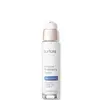What's inside
What's inside
 Key Ingredients
Key Ingredients

 Benefits
Benefits

 Concerns
Concerns

 Ingredients Side-by-side
Ingredients Side-by-side

Water
Skin ConditioningCaprylic/Capric Triglyceride
MaskingAzelaic Acid
BufferingDicaprylyl Ether
EmollientGlycolic Acid
BufferingGlycerin
HumectantGlyceryl Stearate
EmollientCetearyl Alcohol
EmollientSodium Hydroxide
BufferingDimethicone
EmollientNylon-12
Benzoic Acid
MaskingButylene Glycol
HumectantCeteareth-33
CleansingDisodium EDTA
Parfum
MaskingGlycine Soja Oil
EmollientHydrogenated Lecithin
EmulsifyingOligopeptide-68
BleachingSclerotium Gum
Emulsion StabilisingSodium Hyaluronate
HumectantSodium Oleate
CleansingTocopherol
AntioxidantTocopheryl Acetate
AntioxidantWater, Caprylic/Capric Triglyceride, Azelaic Acid, Dicaprylyl Ether, Glycolic Acid, Glycerin, Glyceryl Stearate, Cetearyl Alcohol, Sodium Hydroxide, Dimethicone, Nylon-12, Benzoic Acid, Butylene Glycol, Ceteareth-33, Disodium EDTA, Parfum, Glycine Soja Oil, Hydrogenated Lecithin, Oligopeptide-68, Sclerotium Gum, Sodium Hyaluronate, Sodium Oleate, Tocopherol, Tocopheryl Acetate
Water
Skin ConditioningAlcohol Denat.
AntimicrobialHydroxyethylpiperazine Ethane Sulfonic Acid
BufferingGlycolic Acid
BufferingDiisopropyl Adipate
EmollientPropylene Glycol
HumectantPentylene Glycol
Skin ConditioningCitric Acid
BufferingPPG-26-Buteth-26
Skin ConditioningPEG-30 Glyceryl Cocoate
EmulsifyingPEG-40 Hydrogenated Castor Oil
EmulsifyingSodium Hydroxide
BufferingP-Anisic Acid
MaskingHydrolyzed Hyaluronic Acid
HumectantCapryloyl Salicylic Acid
ExfoliatingTetrasodium EDTA
Polyquaternium-10
Water, Alcohol Denat., Hydroxyethylpiperazine Ethane Sulfonic Acid, Glycolic Acid, Diisopropyl Adipate, Propylene Glycol, Pentylene Glycol, Citric Acid, PPG-26-Buteth-26, PEG-30 Glyceryl Cocoate, PEG-40 Hydrogenated Castor Oil, Sodium Hydroxide, P-Anisic Acid, Hydrolyzed Hyaluronic Acid, Capryloyl Salicylic Acid, Tetrasodium EDTA, Polyquaternium-10
 Reviews
Reviews

Ingredients Explained
These ingredients are found in both products.
Ingredients higher up in an ingredient list are typically present in a larger amount.
Glycolic Acid is arguably the most famous alpha hydroxy acid (AHA) with tons of research backing its benefits.
It is found naturally in sugar cane but the form used in skincare is usually synthetic for purity and stability.
Glycolic acid removes the top layer of dead skin cells to allow newer and fresher ones to emerge.
AHAs work by breaking down the structural “glue” that holds old skin cells in place. When that buildup is gone, your skin can renew itself more efficiently.
Research also shows glycolic acid stimulates collagen production, helping to firm and thicken the skin over time. This is one of its biggest advantages over other AHAs.
Overall, glycolic acid helps with:
Fun fact: Glycolic acid boosts skin hydration by helping it produce molecules that increase hyaluronic acid naturally.
To work best, glycolic acid products should have a pH between 3-4 (that’s where exfoliation is most effective but still gentle on skin).
The pH and concentration of a product are key to its effectiveness:
It is normal to feel a slight stinging sensation when using glycolic acid. This usually fades as your skin adjusts.
Because glycolic acid has the smallest molecular size in the AHA family, it can penetrate deeper, which enhances its effectiveness but also makes it more likely to irritate sensitive skin.
If your skin is very sensitive or prone to rosacea, glycolic acid may be too strong; in that case, try milder options like lactic acid or a PHA instead.
Recent studies suggest glycolic acid might even help protect against UV damage. But don’t skip sunscreen! Freshly exfoliated skin is more sensitive to the sun.
Glycolic acid is a skincare superstar. It smooths, brightens, hydrates, and firms the skin. Unless you’re highly sensitive, it’s well worth adding to your routine.
Read more about some other popular AHA's here:
Learn more about Glycolic AcidSodium Hydroxide is also known as lye or caustic soda. It is used to adjust the pH of products; many ingredients require a specific pH to be effective.
In small amounts, sodium hydroxide is considered safe to use. However, large amounts may cause chemical burns due to its high alkaline.
Your skin has a natural pH and acid mantle. This acid mantle helps prevent harmful bacteria from breaking through. The acid mantle also helps keep your skin hydrated.
"Alkaline" refers to a high pH level. A low pH level would be considered acidic.
Learn more about Sodium HydroxideWater. It's the most common cosmetic ingredient of all. You'll usually see it at the top of ingredient lists, meaning that it makes up the largest part of the product.
So why is it so popular? Water most often acts as a solvent - this means that it helps dissolve other ingredients into the formulation.
You'll also recognize water as that liquid we all need to stay alive. If you see this, drink a glass of water. Stay hydrated!
Learn more about Water